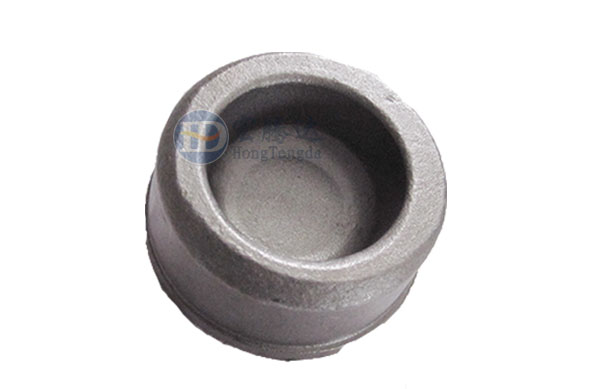中文 青岛宏腾达机械制造公司 18765298988


Hot forging introduction Hot forging is a forging performed above the metal recrystallization temperature. Increasing the temperature can improve the plasticity of the metal, which is beneficial to improve the intrinsic quality of the workpiece and make it less prone to cracking. The high temperature also reduces the deformation resistance of the metal and reduces the tonnage of the required forging machinery. However, there are many hot forging processes, the workpiece precision is poor, the surface is not smooth, and the forgings are prone to oxidation, decarburization and burning. (Qingdao Hongtengda Machinery Manufacturing Co., Ltd. specializes in producing all kinds of hot forgings, rigging, auto parts, stamping parts). When the workpiece is large and thick, the material strength is high and the plasticity is low (such as the thick plate, high carbon) Hot forging is used for the lengthening of steel bars. When metal (such as lead, tin, zinc, copper, aluminum, etc.) has sufficient plasticity and deformation (such as in most stamping processes), or the total amount of deformation is used for the forging process (such as extrusion, When radial forging, etc., is advantageous for plastic deformation of metal, hot forging is often not used, and cold forging is used instead. In order to complete as much forging work as possible for one heating, the temperature range between the initial forging temperature and the final forging temperature of the hot forging should be as large as possible. However, if the initial forging temperature is too high, the metal grain growth will be too large to form an overheating phenomenon, which will reduce the quality of the forging. When the temperature is close to the melting point of the metal, intergranular low melting point melting and intergranular oxidation occur, resulting in over-burning. Overfired billets tend to chip when forged. The hot forging temperature generally used is: carbon steel 800 ~ 1250 ° C; alloy structural steel 850 ~ 1150 ° C; high speed steel 900 ~ 1100 ° C; commonly used aluminum alloy 380 ~ 500 ° C; titanium alloy 850 ~ 1000 ° C; brass 700 ~900 °C.
1. Cold forging introduction It is forging at a temperature lower than the recrystallization temperature of the metal. Generally, the cold forging pressure refers to forging at normal temperature, and the forging at a temperature higher than normal temperature but not exceeding the recrystallization temperature is referred to as warm forging. The precision of warm forging is high. (Hongtengda forgings are professional forgings manufacturers, including all kinds of automotive forgings, mechanical parts forgings, etc.) The surface is smoother and the deformation resistance is not great.
The workpiece formed by cold forging at normal temperature has high shape and dimensional precision, smooth surface, less processing steps, and is convenient for automated production. Many cold forged and cold stamped parts can be used directly as parts or articles without the need for cutting. However, in cold forging, due to the low plasticity of the metal, cracking is likely to occur during deformation, and the deformation resistance is large, and a large tonnage forging machine is required. 2. Warm forging introduction The forging at a temperature higher than normal temperature but not exceeding the recrystallization temperature is referred to as warm forging. (Looking for hot forgings such as claw poles, sliders, pipe fittings, cold extrusions, cold drawing parts, etc.) The metal is preheated, and the heating temperature is much lower than that of hot forging. The precision of warm forging is higher, the surface is smoother and the deformation resistance is not large.
3.Isothermal forging introduction
The billet temperature is kept constant throughout the forming process. Isothermal forging is to take advantage of the high plasticity of certain metals at equal temperatures or to achieve specific microstructure and properties. Isothermal forging requires constant maintenance of the mold and billet at a constant temperature, and is only used for special forging processes such as superplastic forming.